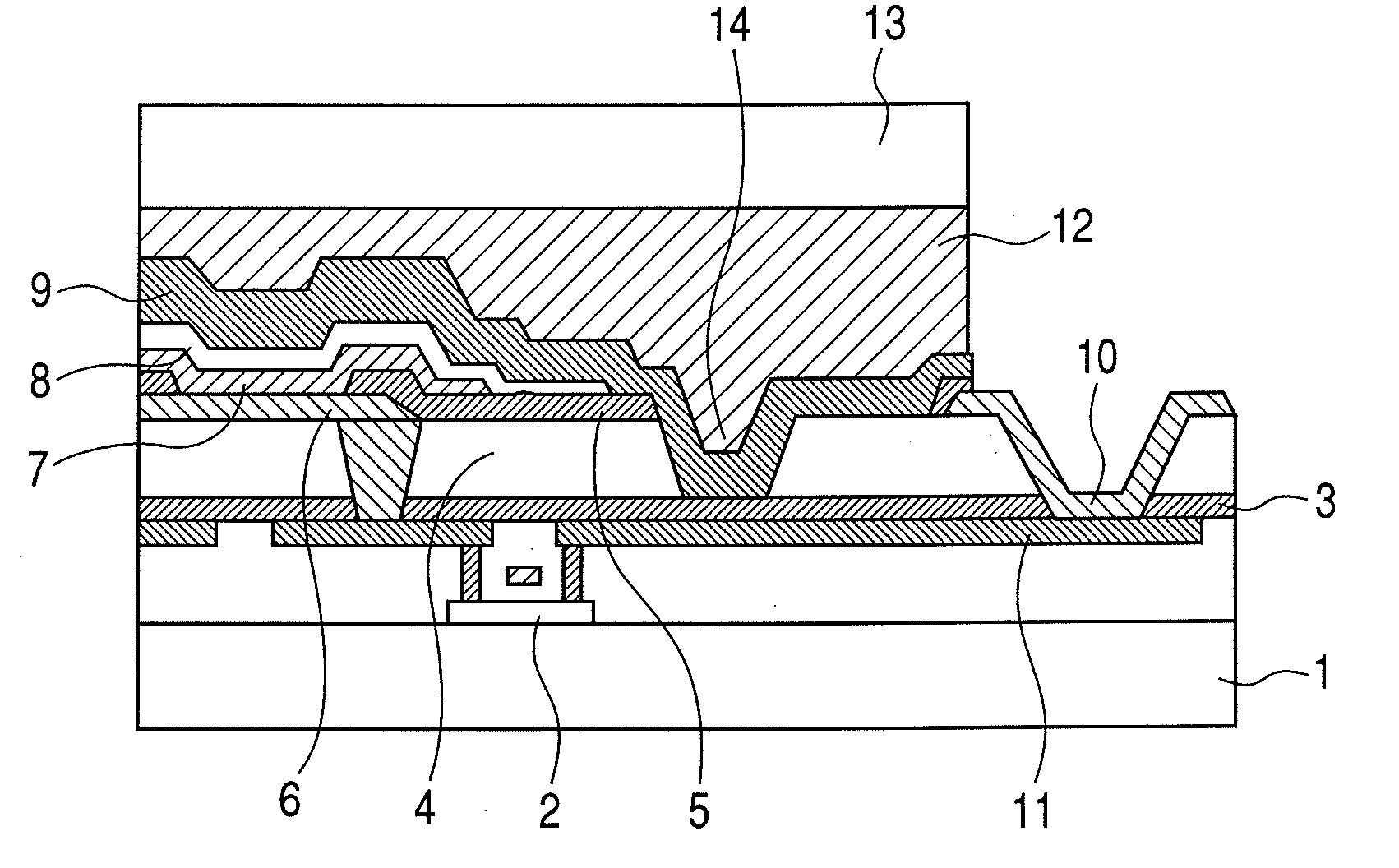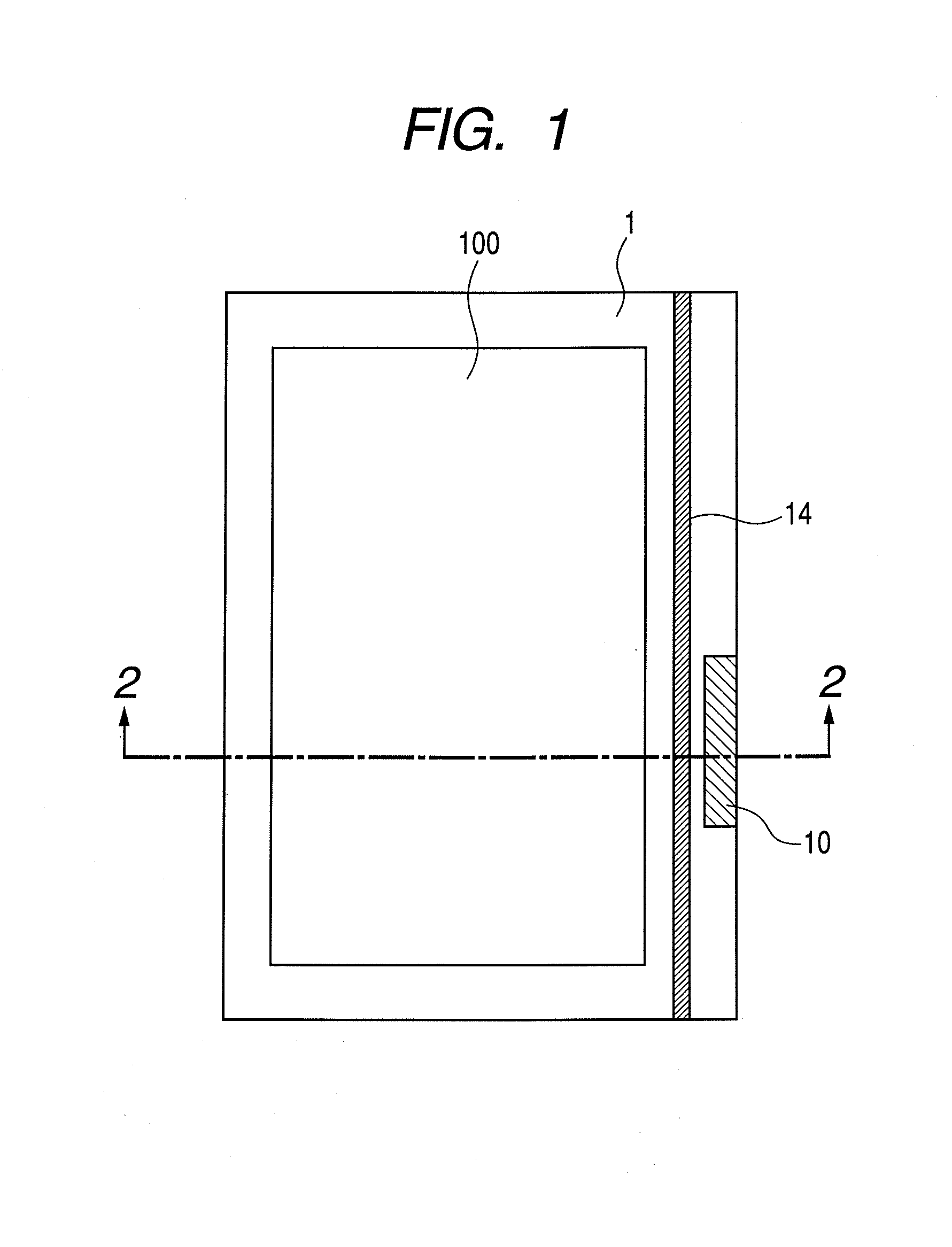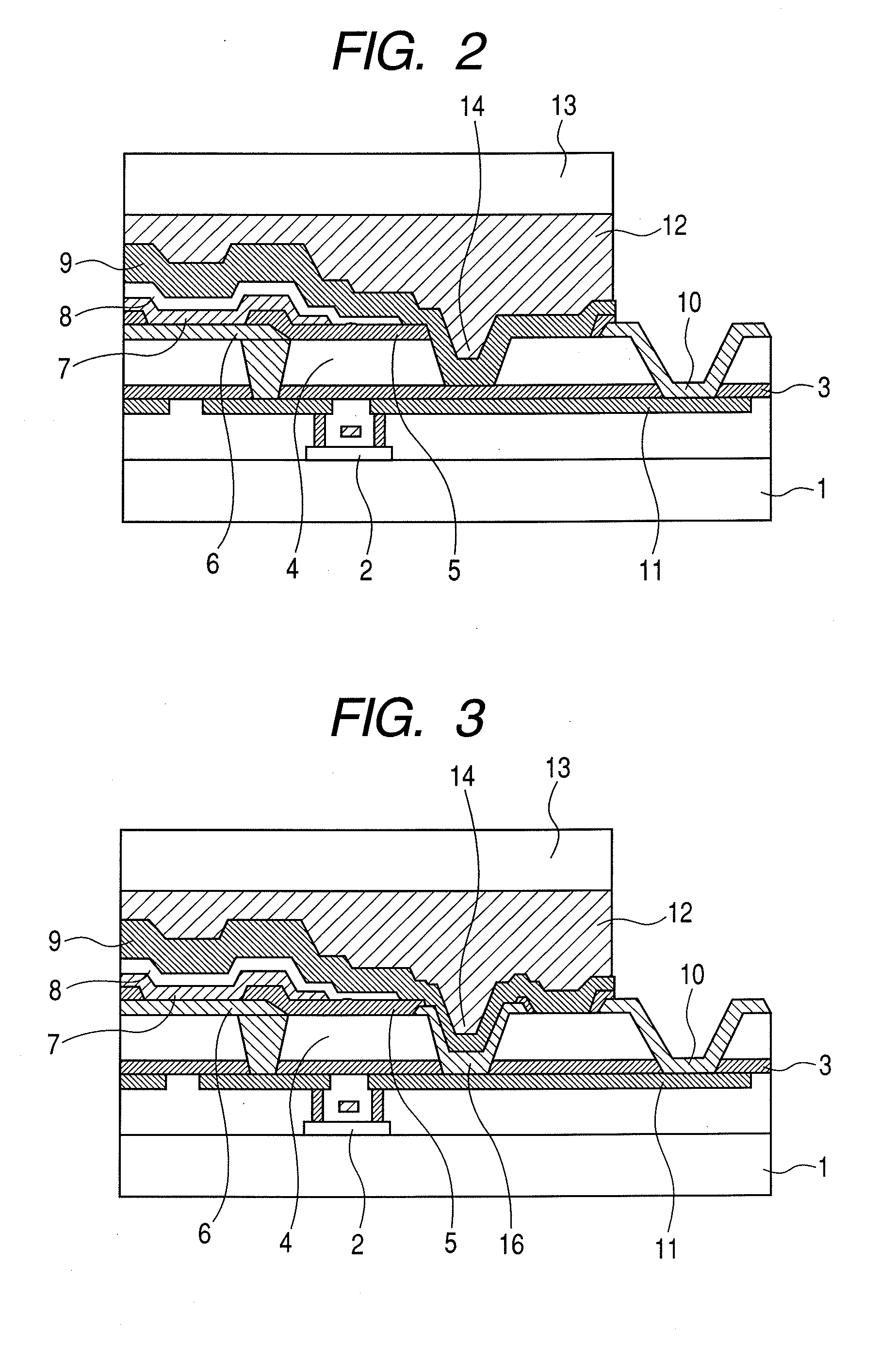Organic light-emitting apparatus and method of producing the same
- Summary
- Abstract
- Description
- Claims
- Application Information
AI Technical Summary
Benefits of technology
Problems solved by technology
Method used
Image
Examples
embodiment 1
[0026]Embodiment 1 of the present invention is described with reference to FIGS. 1 and 2. FIG. 2 is a schematic cross-sectional view taken along line 2-2 of FIG. 1.
[0027]First, a method of producing an organic light-emitting apparatus is described, and then the organic light-emitting apparatus is described.
[0028]The method of producing an organic light-emitting apparatus is suitably implemented as a method of producing an organic light-emitting apparatus including at least a substrate 1, an organic planarization layer 4 for planarizing unevenness of the substrate 1, organic light-emitting devices, and a passivation layer 9 which covers the above-mentioned components.
[0029]Thin-film transistors 2 for driving respective organic light-emitting devices were formed on the substrate 1. The substrate 1 may be either transparent or opaque, and may be an insulating substrate formed of a synthetic resin or the like, or alternatively, may be a conductive substrate or a semiconductor substrate ...
embodiment 2
[0047]While, in Embodiment 1 described above, the passivation layer 9 was formed directly on the discontinuous portion 14, as illustrated in FIG. 3, an inorganic layer 16 may be formed in the discontinuous portion 14 and the passivation layer 9 may be formed on the inorganic layer 16.
[0048]More specifically, when, for example, the upper electrode 8 was formed, a metal oxide conductive film of ITO, IZO, or the like which had the same composition as that of the upper electrode 8 was formed also in the discontinuous portion 14. By adopting such a configuration, the contact area between the side wall and its vicinity of the discontinuous portion 14 and the passivation layer 9 can be increased, so that the passivation layer 9 can be more closely contacted. In addition, because the adhesion between a metal oxide conductor which is a metal compound and the passivation layer is high, and because the coefficient of thermal expansion of the metal oxide conductor is far closer to that of the p...
embodiment 3
[0050]While, in Embodiments 1 and 2 above, the discontinuous portion 14 was formed in a line so as to separate the region including the light-emitting area 100 and the region including the external connection terminal 10, as illustrated in FIG. 4, the discontinuous portion 14 may be formed so as to surround the region including the external connection terminal 10. In this case, the area of the region including the external connection terminal 10 can be made minimum and waste produced when peeling the passivation layer 9 can be reduced. Further, because the development of cracking can be further suppressed, the sealing performance can be improved.
PUM
 Login to View More
Login to View More Abstract
Description
Claims
Application Information
 Login to View More
Login to View More - R&D
- Intellectual Property
- Life Sciences
- Materials
- Tech Scout
- Unparalleled Data Quality
- Higher Quality Content
- 60% Fewer Hallucinations
Browse by: Latest US Patents, China's latest patents, Technical Efficacy Thesaurus, Application Domain, Technology Topic, Popular Technical Reports.
© 2025 PatSnap. All rights reserved.Legal|Privacy policy|Modern Slavery Act Transparency Statement|Sitemap|About US| Contact US: help@patsnap.com



